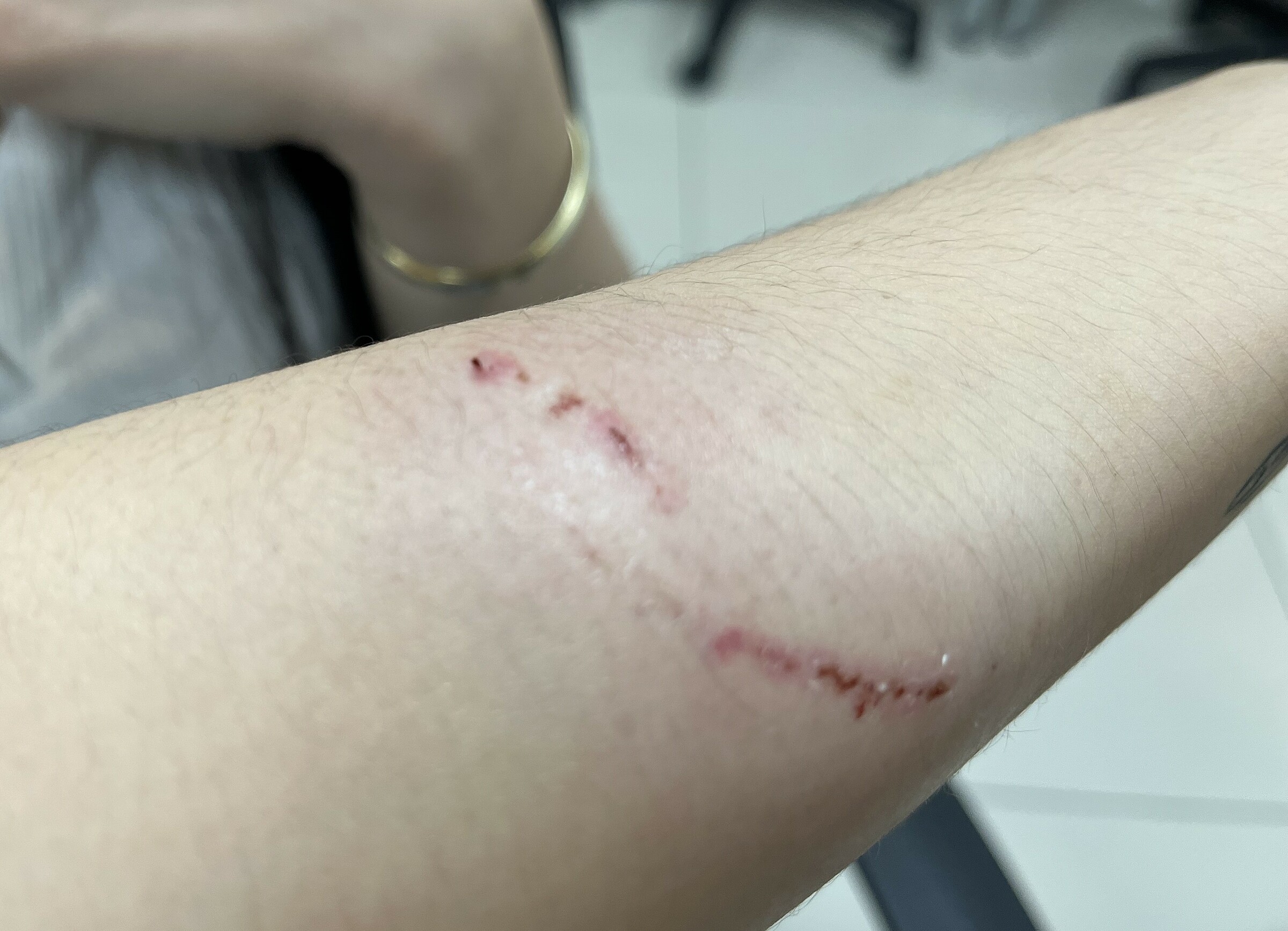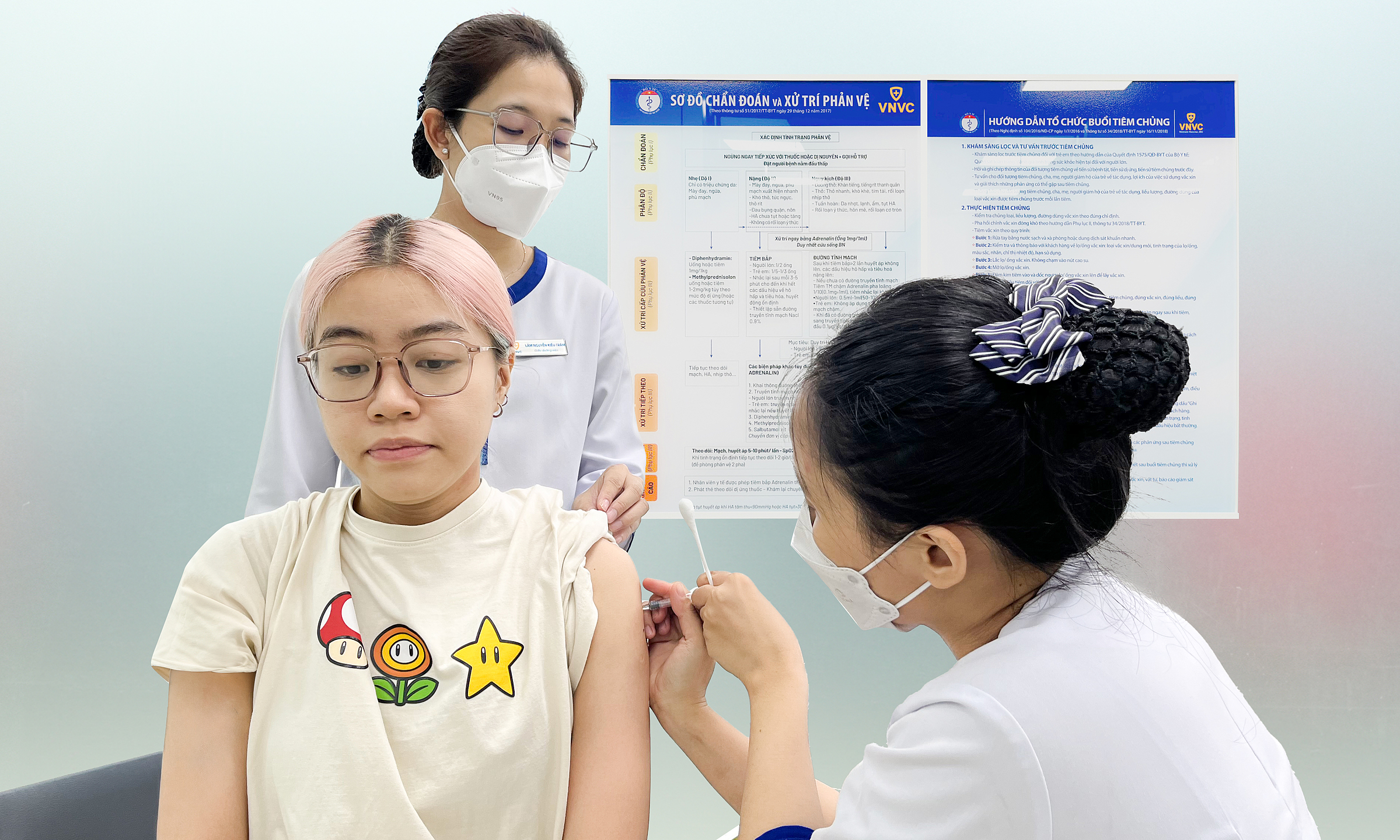Kim Thanh, from Da Nang, was excited to explore Ha Giang's winding roads and experience the culture of ethnic minorities for the first time. However, while walking around a village, a dog bit her arm, drawing blood.
The homeowner said the dog hadn't been vaccinated and the nearest vaccination center was quite far. Worried, Thanh stayed up all night. The next day, she booked the earliest bus back to Hanoi for a rabies vaccine and immunoglobulin, cutting her trip short by three days.
"The owner said the dog was healthy, but it was difficult to monitor it. I didn't know where to find a vaccine in Ha Giang, or if they even had any, so I returned to the city to be safe," Thanh shared.
 |
Kim Thanh's arm injury from the dog bite and scratches. Photo: NVCC |
Kim Thanh's arm injury from the dog bite and scratches. Photo: NVCC
Similarly, Vuong Han, a 26-year-old freelance English teacher from Thu Duc City, travels twice a year, either across Vietnam or abroad. During a three-day, two-night trip to Dak Nong with friends, Han was scratched and bled by a seemingly cute cat at a restaurant after attempting to pet it.
After washing the wound with soap and learning the cat had been vaccinated, Han still felt uneasy. She booked a bus back to Ho Chi Minh City for a rabies vaccine and immunoglobulin, instead of staying for another day as planned.
"If treatment is delayed, the virus can reach the brain and become incurable. I also wasn't in the mood to stay and continue my trip," Han said.
Doctor Bui Thanh Phong, Medical Manager of VNVC vaccination system, said both women demonstrated good awareness of rabies prevention. However, he emphasized the importance of initial wound care before vaccination. These steps are crucial for removing the rabies virus from the wound and slowing down the infection process.
The procedure involves washing the wound with soap and running water for 45 minutes, then disinfecting it with 45-70% alcohol or iodine to minimize the amount of virus entering the body. Avoid damaging the wound further, and don't cover it completely or treat it with folk remedies.
Rabies vaccines should be administered as soon as possible. Vietnam currently offers two new-generation rabies vaccines: Verorab (France) and Abhayrab (India), neither of which affects memory or the nervous system.
 |
Vuong Han receives her second rabies vaccine dose at VNVC Cantavil An Phu, Thu Duc City, Ho Chi Minh City. Photo: Dieu Thuan |
Vuong Han receives her second rabies vaccine dose at VNVC Cantavil An Phu, Thu Duc City, Ho Chi Minh City. Photo: Dieu Thuan
For those unvaccinated or with unclear vaccination histories, the post-exposure vaccination schedule after a bite or scratch consists of five intramuscular injections on days 0, 3, 7, 14, and 28, or eight intradermal injections on days 0, 3, 7, and 28. Depending on the severity of the wound, doctors may also administer rabies immunoglobulin. Vaccination can be stopped if the animal remains healthy after 10 days of observation.
Frequent travelers, cave explorers, nature researchers, and volunteers who have frequent contact with animals are at higher risk of contracting rabies. Besides dogs and cats, wild animals such as bats, foxes, and weasels can also transmit rabies to humans. Therefore, when traveling, it's advisable to locate medical facilities and vaccination centers that offer rabies vaccines for prompt access in case of an animal attack.
Accessing rabies vaccines and immunoglobulin can be challenging in remote areas or abroad. Those at high risk can get pre-exposure vaccination. This involves three doses on days 0, 7, and 21 or 28, with booster shots as directed by a doctor. If fully vaccinated, only two doses are needed on days 0 and 3 after a subsequent bite or scratch. Further bites or scratches only require two additional doses, without immunoglobulin.
Rabies is a viral disease transmitted from infected warm-blooded mammals like dogs, cats, foxes, rabbits, and bats to humans through bites, scratches, or licks. Upon entering the body, the virus replicates locally and enters muscle nerves. It then travels to the peripheral nerves, reaching the spinal cord and brain at an estimated rate of 12-24 mm per day. Rabies is almost always fatal in both humans and animals.
During the incubation period, the rabies virus doesn't cause symptoms, making it undetectable by the immune system. Once it reaches the brain, symptoms of acute encephalomyelitis appear, including hydrophobia (fear of water), aerophobia (fear of drafts or of fresh air), photophobia (fear of light), and excessive salivation. Death usually occurs from respiratory paralysis 2-6 days after the onset of symptoms. Rabies cases tend to increase during hot weather as people engage in more outdoor activities, and animals have increased contact and venture out for food, increasing their risk of infection.
Tuan An












